7 Types of Interior Doors to Use in Your Home
Whether you want privacy or style, there’s a door type for your interior space


When thinking about home design, you may not put as much thought into interior doors as you do with your front door. However, as you build or renovate, you'll find many types of interior doors each suited to different styles and functions that can help create a cohesive space. You'll want to hone in on doors that meet your specific needs in every room. Let’s take a look at the most common interior door styles and their pros and cons to help you find the right fit.
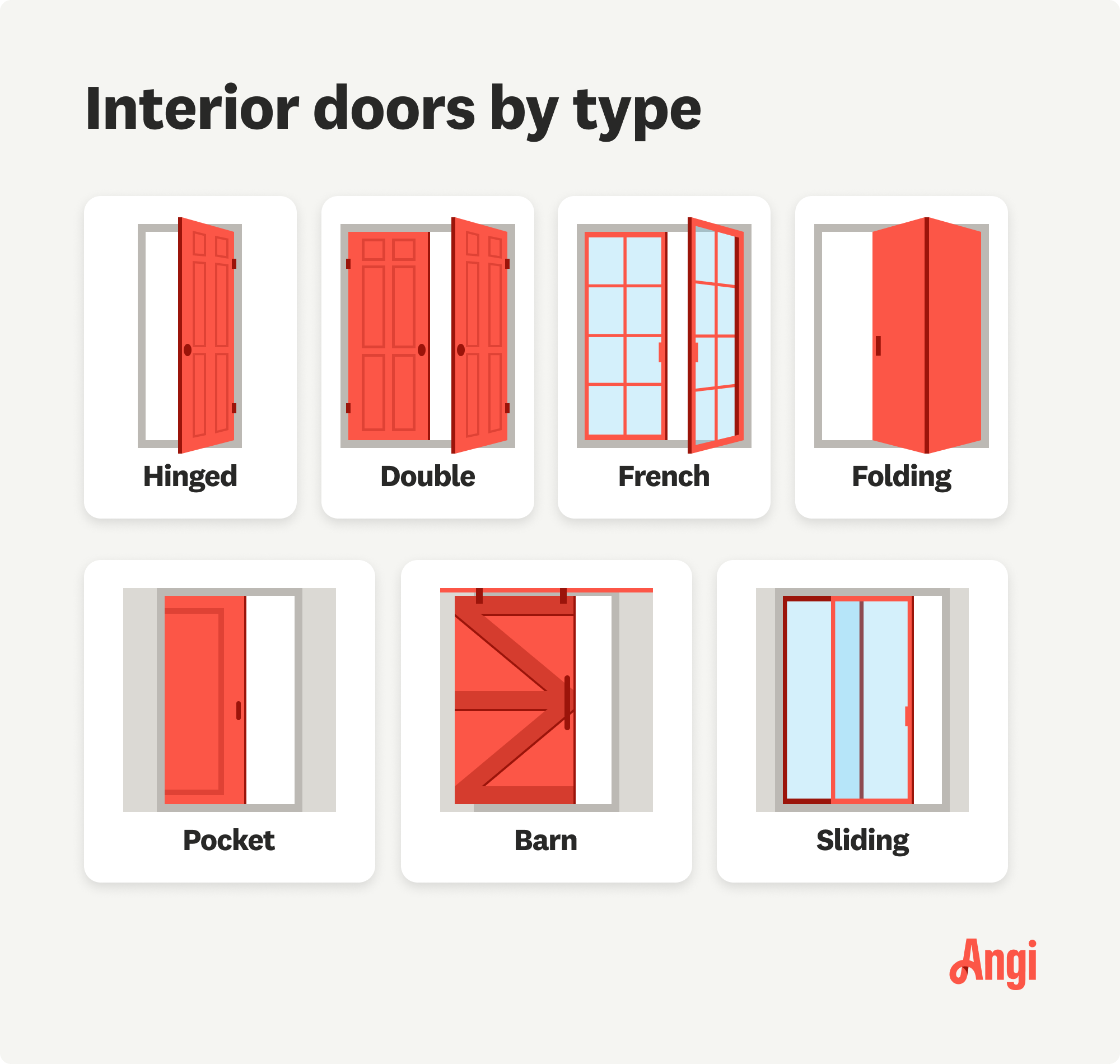
1. Hinged Door
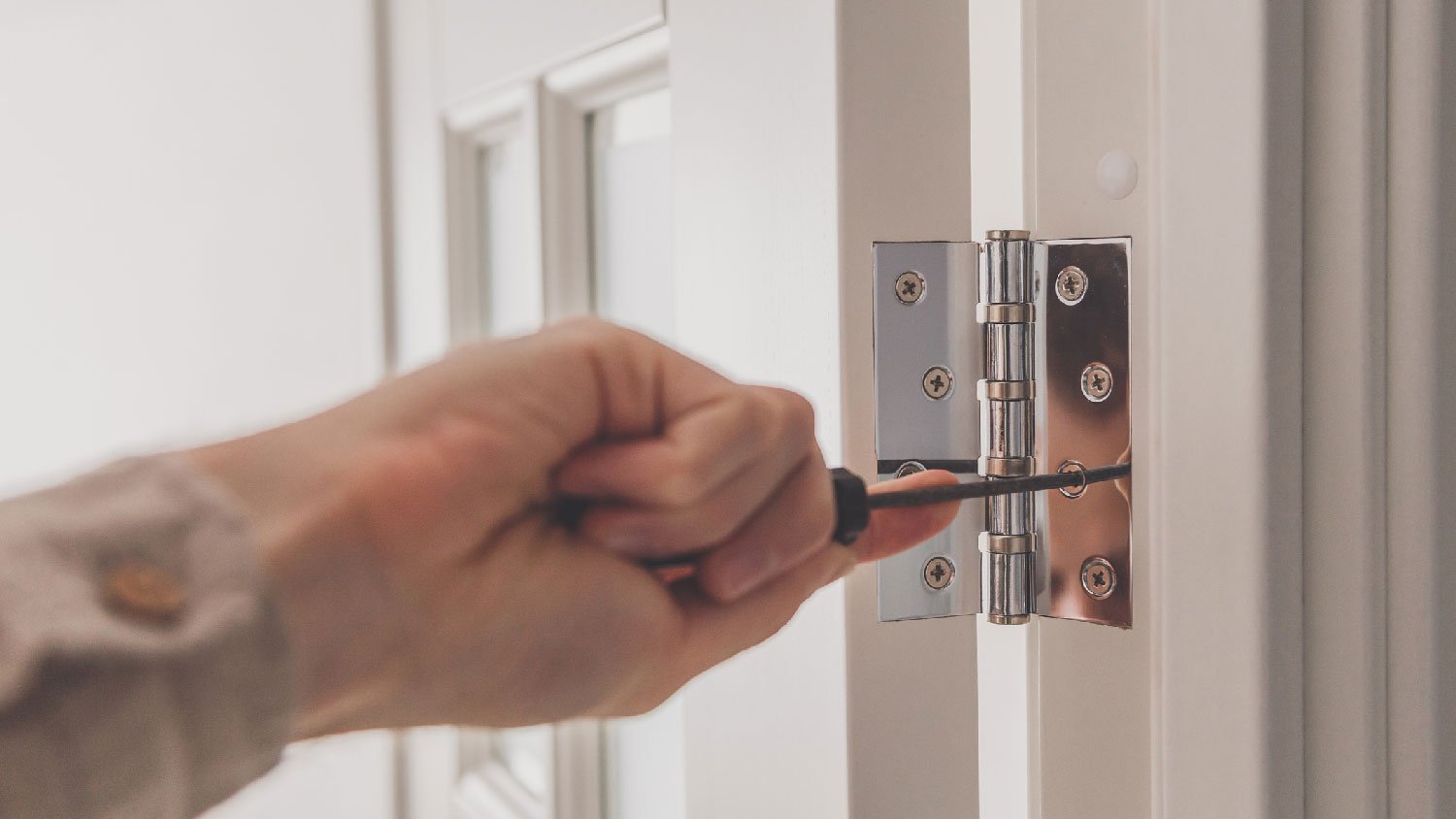
A hinged door is the most common interior door style in modern homes. It consists of a single rectangular door that swings inward or outward on hinges attached to the door frame.
Hinged doors can be made from just about any material in a range of styles, including flush slabs, panel designs, glass windows, and louvered slats. For this reason, they can be understated or highly decorative.
| Pros | Cons |
|---|---|
| Cost-effective on any budget | Basic functionality |
| Wide array of styles, materials, and finishes | Requires space to swing open |
| Solid and durable | Can be a safety hazard if left open |
Best for: Any room that requires privacy or security
2. Double Door
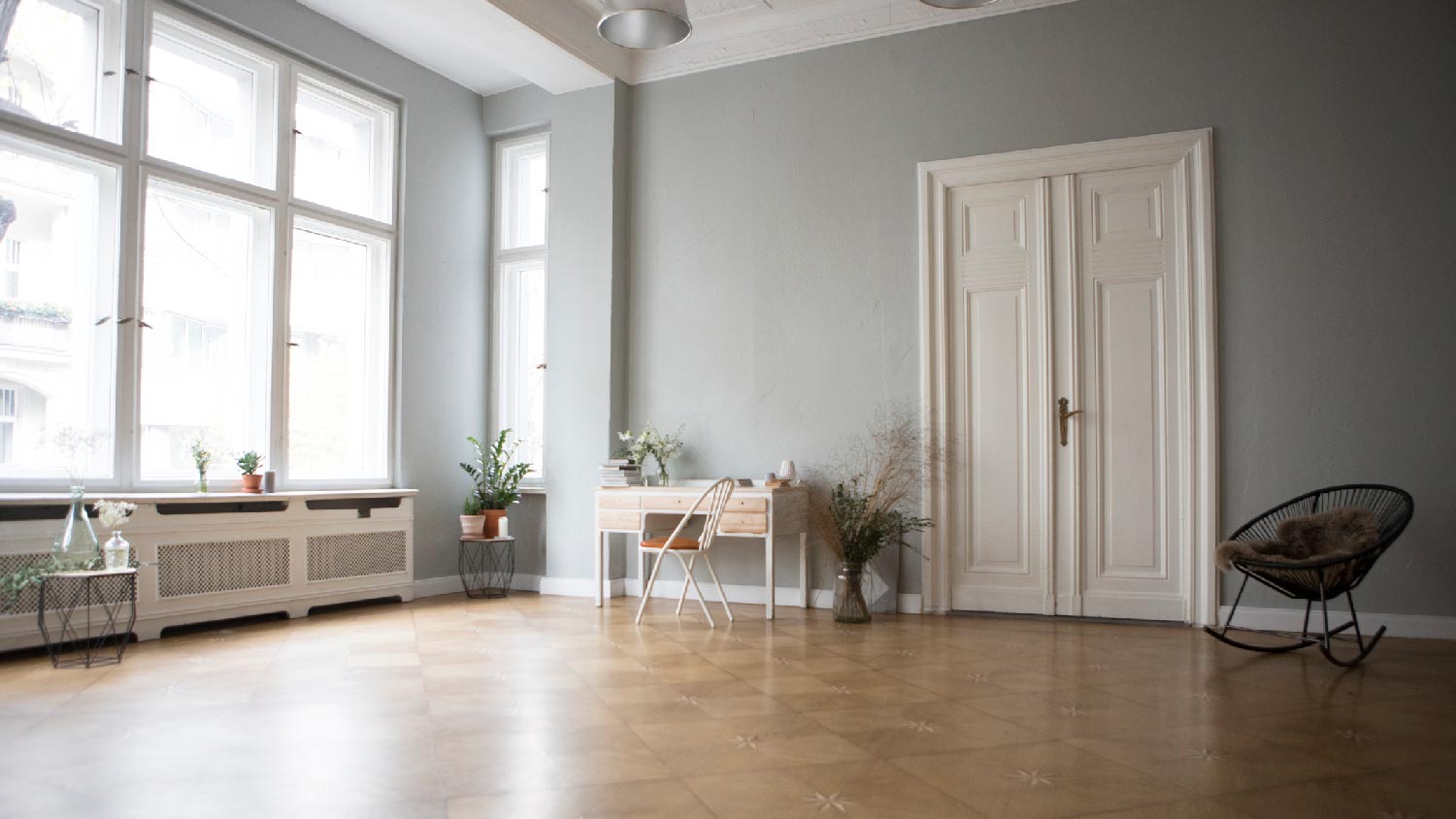
Hinged double doors can create a grand entryway to a room. The wide doorway creates an open feeling between rooms, though it also requires much more space. For this reason, double doors are far less common.
| Pros | Cons |
|---|---|
| Makes a statement | Requires a wide opening for installation |
| Creates privacy and quiet in large openings | Requires enough floor space for both doors |
| Makes open floor plans more flexible | Higher material cost than a single door |
Best for: Large living areas where you want to make a statement
3. French Doors
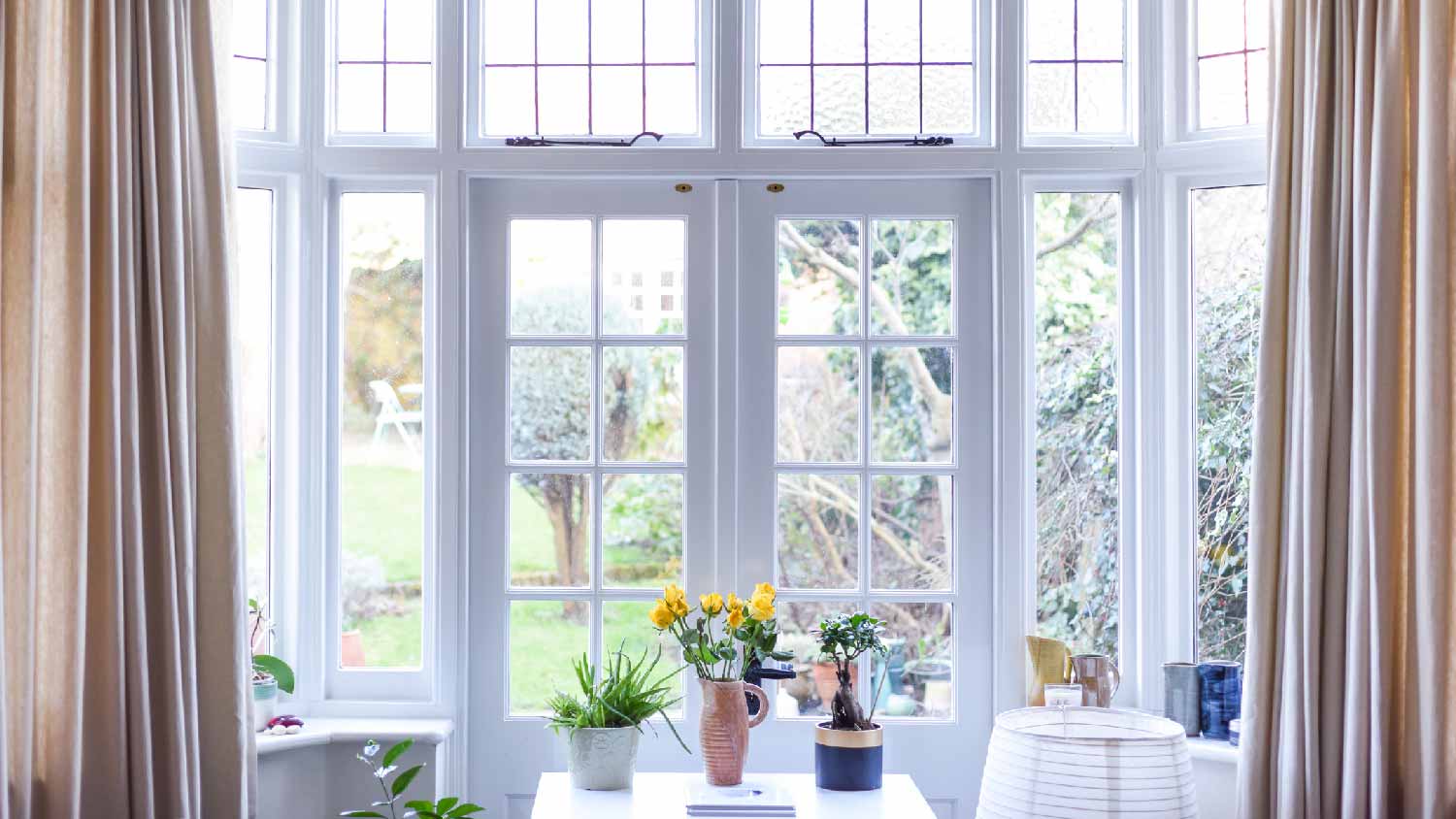
French doors are a specific type of double doors. They typically incorporate glass panes from top to bottom. This classic design lets in a lot of natural light and brightens interior living spaces thanks to its transparency. This also maintains the open feel of large rooms while blocking out sound.
| Pros | Cons |
|---|---|
| Let in a lot of natural light | Don’t provide privacy |
| Block sound without closing off the room | Glass requires more frequent cleaning |
| Timeless look that's always in style | Higher material costs than single doors |
Best for: Dining rooms, home offices, and other living spaces where you want to maintain a view of other rooms
4. Folding Door
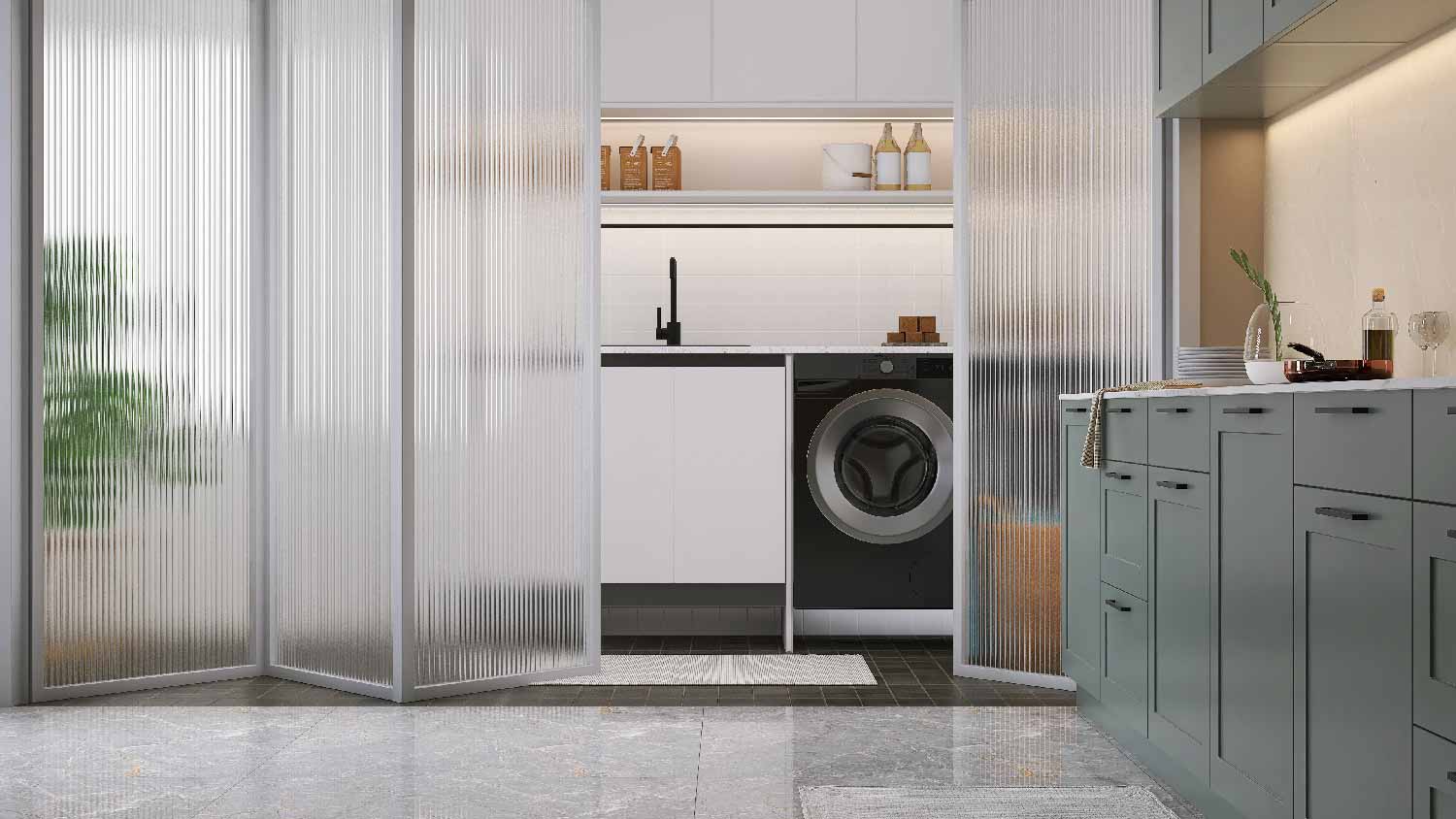
Folding doors come in several varieties. Bi-fold doors feature two panels hinged in the center that slide to one side to open. They're often found in closets and pantries and may come in sets of two for larger openings.
Accordion doors are similar but can feature additional panels. Folding doors are convenient for closing off smaller spaces or dividing parts of an open living space.
| Pros | Cons |
|---|---|
| Fold up to save space | Many joints make cleaning difficult |
| Can work in any size opening | More difficult to install |
| Can be used to divide larger rooms | Higher upfront cost |
Best for: Closets, bathrooms, and small entrances where space is limited
5. Pocket Door
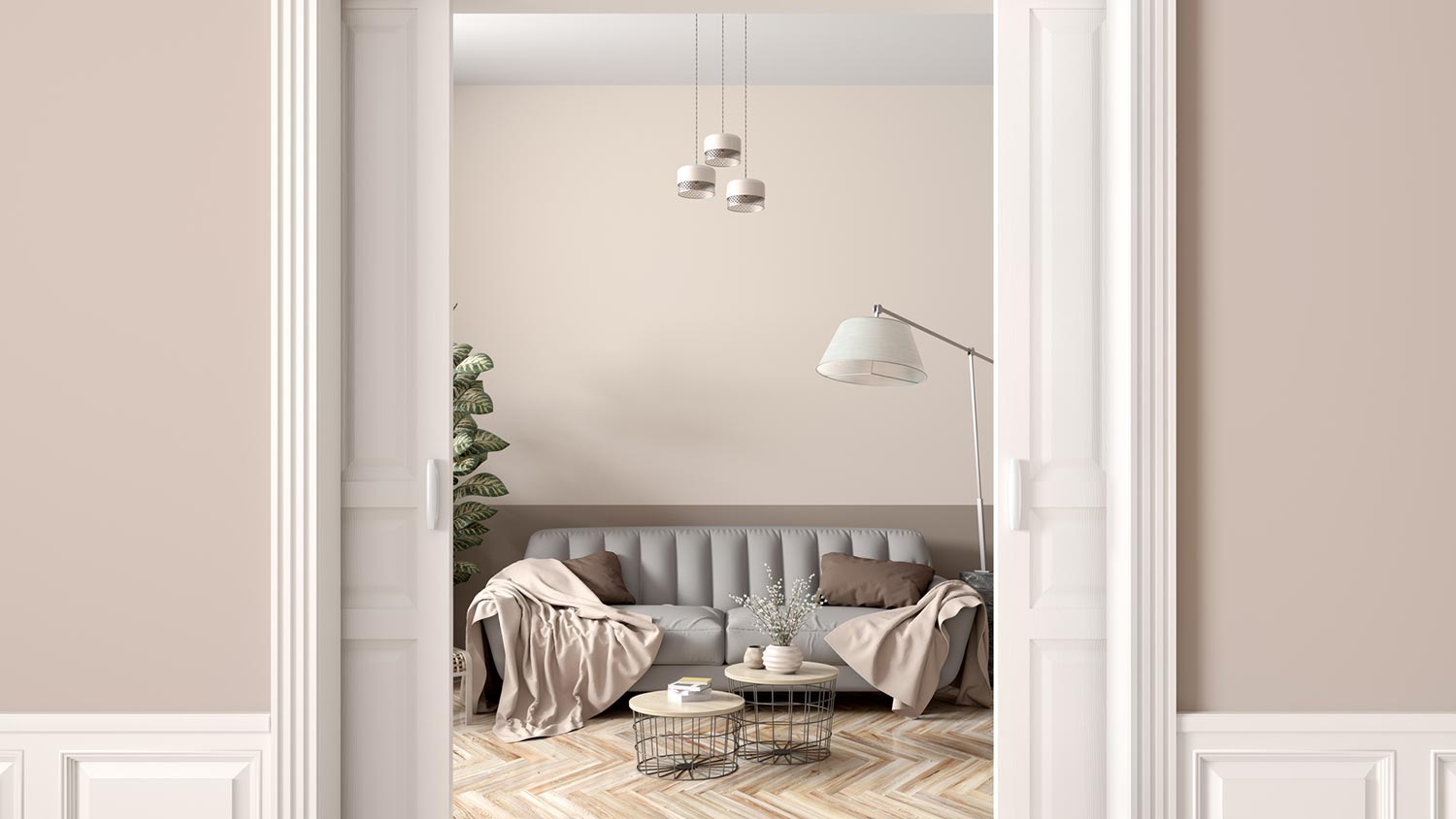
Also called cavity wall doors, pocket doors slide on a track and tuck into a cavity in the wall when opened. This means that no part of the door takes up floor space, saving more space than any other type of interior door. Pocket doors are versatile enough to fit into any part of the home.
| Pros | Cons |
|---|---|
| Takes up no floor space | Installation requires space inside walls |
| Hidden when open | Relatively basic design |
| Works in any design style | Difficult to repair and maintain |
Best for: Tight spaces like bathrooms, pantries, closets, and laundry rooms
6. Barn Door
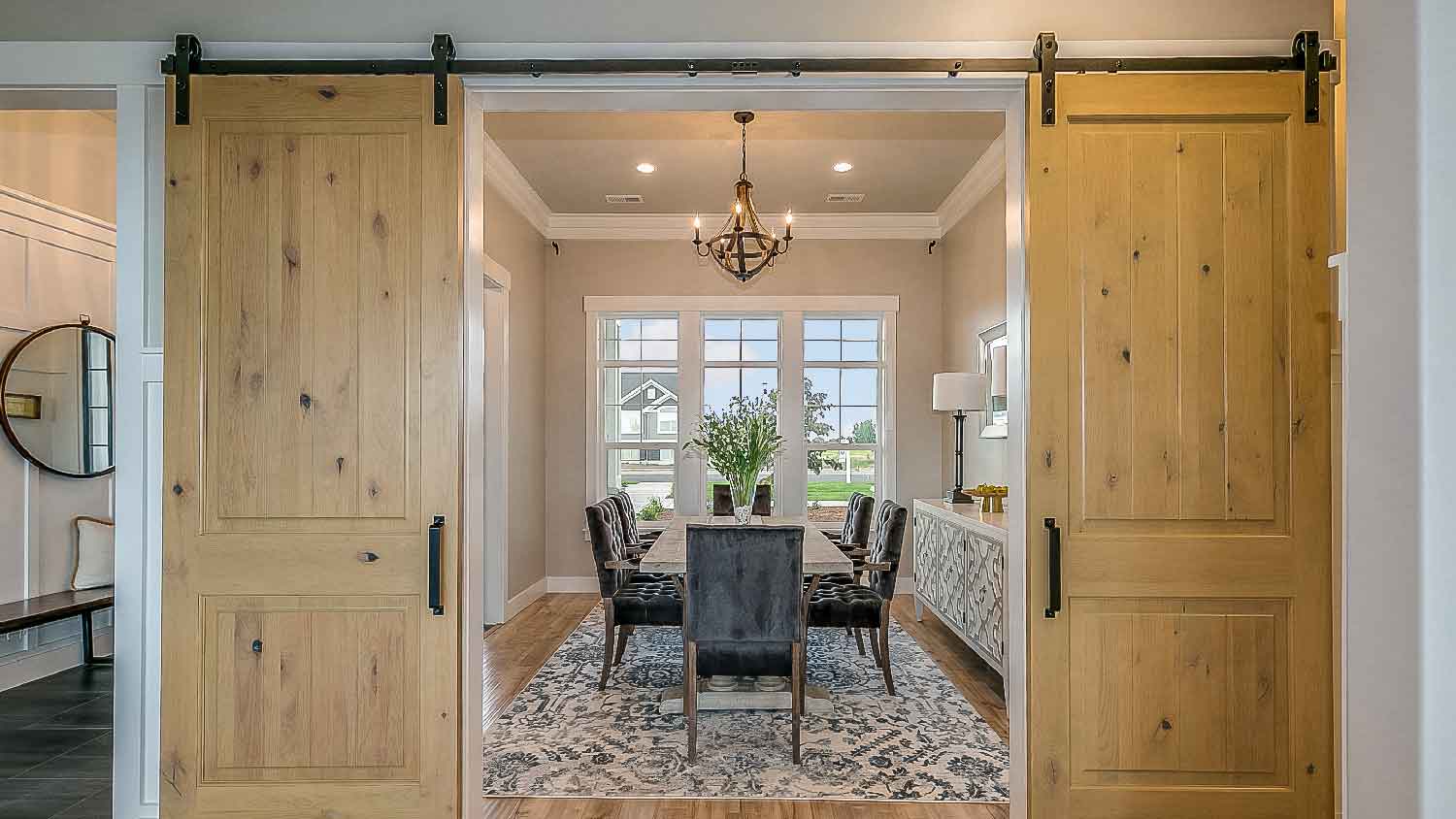
Barn doors are large panels that hang freely from a single top track. They slide along walls to open and close, saving floor space in high-traffic parts of a home. They tend to make a strong design impact and have become popular in several different interior design styles. You'll commonly find them in rustic or modern farmhouse designs as well as industrial chic settings.
| Pros | Cons |
|---|---|
| Lacks a bottom track to make sliding easy | Heavy and requires specific hardware |
| Makes a strong visual statement | Materials tend to come at a high cost |
| Lets you maintain the flow between rooms | Doesn’t dampen sound well |
Best for: Very large openings and entryways to living and dining spaces
7. Traditional Sliding Door
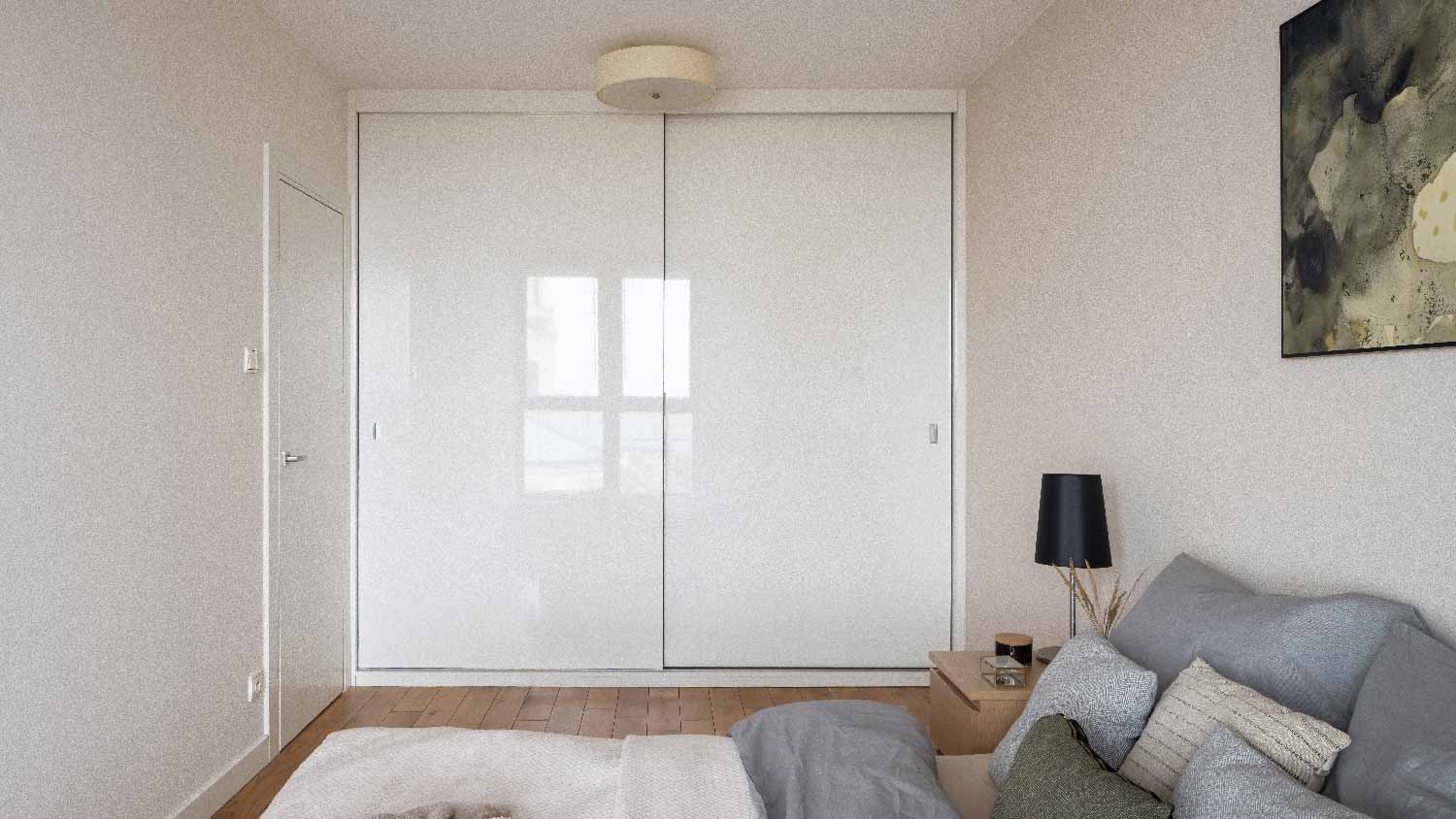
In contrast to pocket doors and barn doors, a traditional sliding door installation features an upper and lower track that runs along the entryway. Sliding doors sit flush against the wall when opened and can have multiple panels for larger openings.
Although sliding doors are a more common type of exterior door, they can still be found in interior spaces like closets. Some homeowners use them to close off large openings or divide up open-plan living spaces.
| Pros | Cons |
|---|---|
| Saves space in small rooms | May require additional cleaning |
| Fits extra-wide openings | Bottom tracks run across the floor |
| Can divide large rooms for flexibility | Heavy and difficult to operate |
Best for: Closets in tight spaces, extra-large openings, and dividers in large rooms
Things to Consider When Installing Interior Doors
Before you purchase a new door, inspect your previous door and keep the following points in mind before contacting a local door installer.
Installation Difficulty
Determine whether you want to install the door yourself or hire a contractor. Interior door types vary in ease of installation. Replacing an existing door with the same type can be relatively simple if the hardware is similar. On the other hand, swapping a basic hinged door for a pocket door requires specialized knowledge, so you’ll have to find out who to hire to install a door in your area.
Handedness
If replacing an existing hinged door with another hinged door, make sure the door you choose matches the "handedness" and measurements of the previous door. Handedness refers to which direction the door swings open. You can determine this by standing in the doorframe with your back to the hinges. If the doorknob is closer to your right hand, it's a right-handed door.
Pre-Hung Doors
Some hinged doors come pre-hung in a frame designed to fit right into your doorway. These are convenient for new builds or renovations where you've created a new or wider opening that needs new framing. Pre-hung doors come in standard sizes and a variety of styles.
Choosing the Right Interior Door
The right interior door for your project will meet your functionality, style, and budget needs. Ask yourself the following:
Do I need privacy in this room?
Do I want a door I can see through?
Do I want this door to block out sound?
Do I want to maximize natural light?
Do I want to make a design statement or keep things simple?
How much can I budget for interior door installation costs?
These questions will help you choose the right type of interior door, but there are other factors to consider after that. One of the biggest is the material you want. There are many options, and they may vary between types. Some common interior door materials include:
Solid wood: Has a warm look, sturdy construction, and noise-dampening properties
Solid core: Looks like solid wood but costs less
Hollow core: Wood boards sandwich a core that doesn't muffle sound well
Glass: Lets in natural light but doesn't allow for privacy unless frosted
Vinyl: A budget-friendly option for sliding and folding doors
Fire-resistant: Required by building codes for certain spaces
Louvered wood: Made of slats for lighter doors that let in air



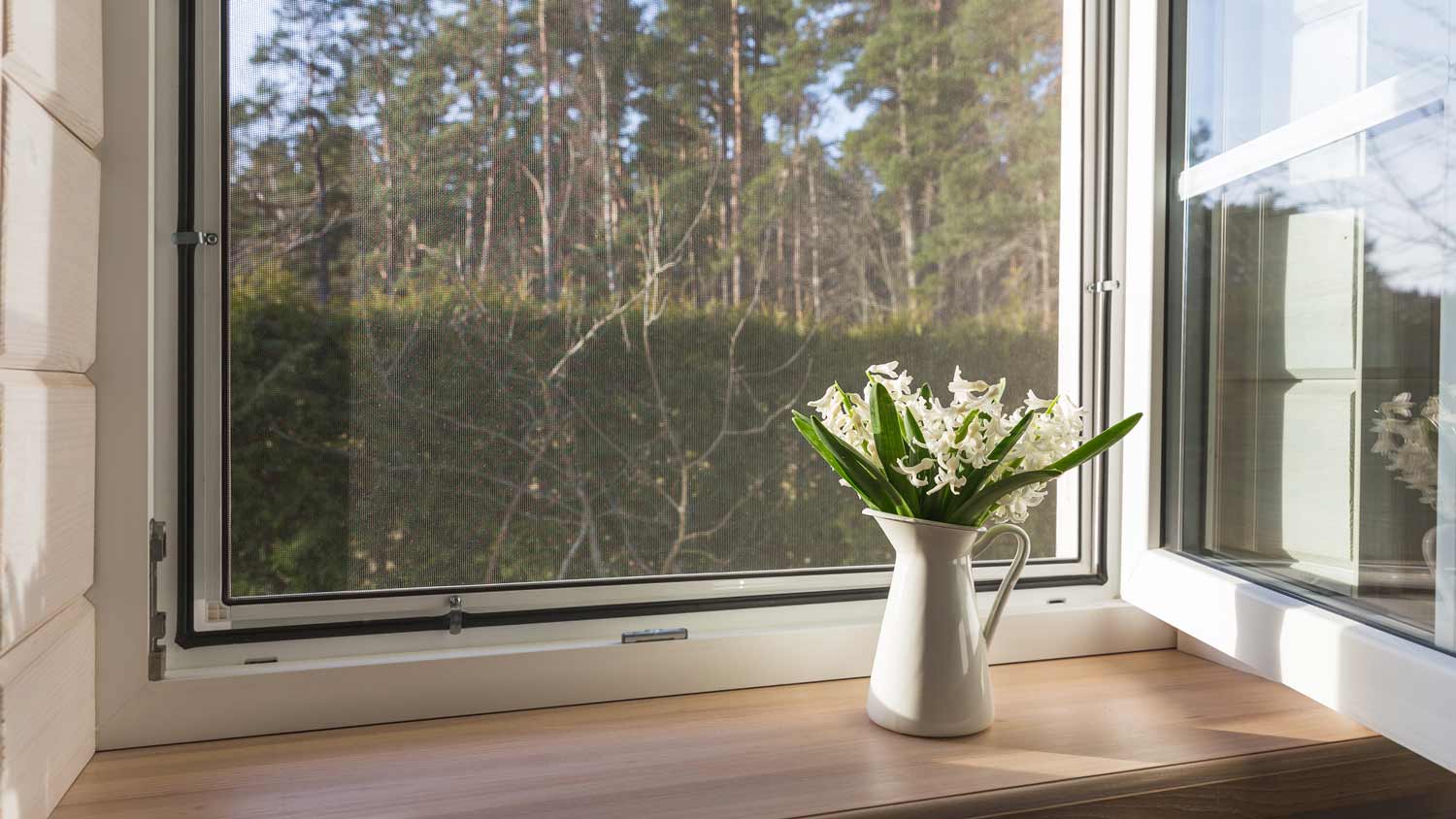

- 23 Types of Doors for Inside and Outside Your Home
- 10 Unique Ideas for Interior Door Designs
- Standard Door Sizes for Interior and Exterior Doors
- Center-Hinged Patio Door vs. French Door: What’s the Difference?
- How Long Do Front Doors Last?
- 8 Tips for Stylishly Updating Interior Doors
- All the Parts of a Door: The Homeowner’s Guide
- 13 Functional Closet Door Ideas for Every Space & Style
- 5 Ways To Make Your Front Door Energy Efficient
- 9 Tips to Make Installing a Pocket Door in Your Home Easy










